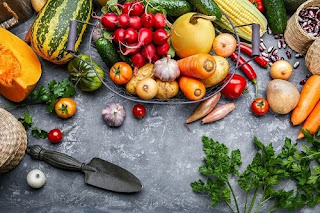6 Steps to Germinate Seeds: A Guide for New-Age Farmers
Seed germination is a process by which tomato seeds, sunflowers, etc., grow into plants. Water is one of the most important things necessary for the germination of seeds. Seeds also require oxygen found in the pores of the soil. Other things required for seed germination are optimum temperature and light. By following some steps, new-age farmers can ensure seed germination without any hassles.
Are you learning the nuances of farming like seed germination? Fret not! Only a few basic tools are required to germinate seeds of vegetables or flowers. The seeds of vegetables or flowers require precise temperatures. But you should first understand the major factors that affect seed germination include water, temperature, and oxygen. After you understand what is required for the germination of seeds you can take an overview of the instructions mentioned on the packet. Here are some general steps to guide you:
Prepare the Seed-Starter Soil Mix
Use a seed starter kit, which is also known as seedling cups or peat pots. You can fill paper egg cartons with a seed-starting mix or a growing medium. Whatever container you use should ideally have drainage holes.
Place the Seeds in the Soil
You should follow the instructions given on the seed packet to see how deep you should plant the seeds. Generally, it is advised to sow the seeds at a depth of two times the width of a seed for best results. For the seeds of tomato, which are smaller, you can press them below the soil surface lightly. You do not have to dig any deep holes in the soil to sow them. If you want faster germination of seeds without soil, you can also place seeds on top of a damp paper towel and cover them with a plastic bag. This will give you results in less than a week.
Keep the Seeds in a Warm Area
You should check the instructions to see what the ideal soil temperature is needed for the plants. After this, place the seeds in an area where they can receive partial sunlight so that they can get optimum temperature and light to grow. Make sure to avoid hot direct sunlight because it may kill the seedlings. You will get better results if you grow seedlings at room temperature. If required, you can also use fluorescent lights or grow lights to get healthy seedlings.
Maintain the Moisture in the Potting Mix
For seeds to germinate, both heat and constant moisture are required so you must keep the potting mix moist. To keep the soil evenly moist you can use a spray bottle. Do not soak or overwater the seeds as it can damage them.
Thin Seedlings to Encourage Larger Plants
The seeds can be transplanted into seedling kits or potting cups once they have sprouted and tiny roots start poking through the damp paper towel. If, however, you started your seeds in the soil, you can concentrate on thinning the seedlings in each cup or peat pot once you notice sprouts appearing. Keep the sprouts that appear the biggest and discard the rest. Continue to keep the soil moist, but make sure there is good airflow.
By following these tips diligently, you can ensure a smooth seed germination process. For further clarity, it is recommended to consult seasoned farmers in your area and learn more about their first-hand experiences.




Comments
Post a Comment